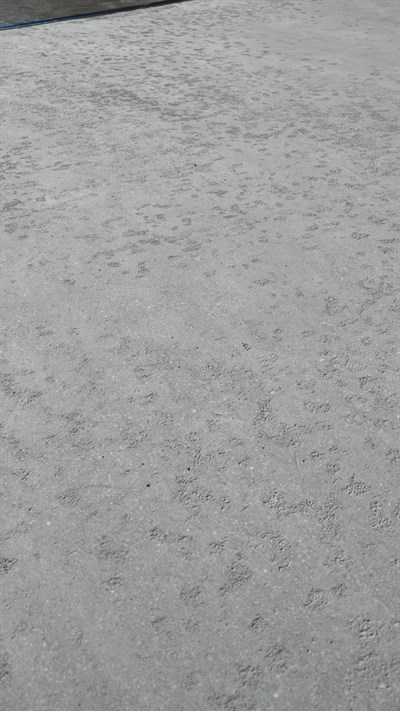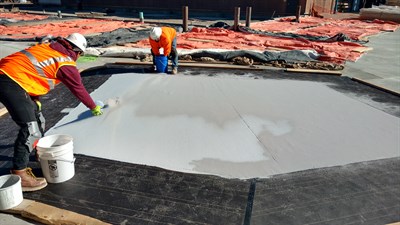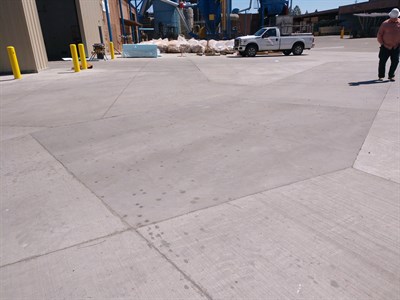SPALLED CONCRETE IN A HIGH TRAFFIC AREA RECOVERED AND PROTECTED BY BELZONA
Industry: Pulp & Paper (PLPR)
Application: FPA-Floor Problem Areas (FPA)
Substrate: Concrete
Customer Location: Oregon, USA
Application Date: November 2017
Products:
Belzona 5231 (SG Laminate)
Belzona 5233
Problem: Fresh concrete section that was poured developed severe spalling and pits. The customer was concerned that this would open up this section for water to penetrate the pad and through the winter the water would freeze and cause even worse damage. The customer required a material that would not be smooth and slippery, and they wanted it to "look like concrete".
Photograph Descriptions
1. Original condition showing the spalling and pitting.
2. Belzona 5231 applied, the aggregate being spread.
3. Belzona 5231/5233 application complete.
4. The application after 6 months.
Application Situation
Concrete area in a wood production plant where 75,000 lb forklifts carrying large units of wood travel over it. It is also in the middle of where semi-trucks pass through the yard. This is located in Eastern Oregon, so there are also snow plows that pass over this application.
Application Method
We waited for the fresh concrete to fully cure. Surface prep was done with hand grinders to remove all of the surface laitence and loose material from the spalling. There were still some areas of deeper pitting that we addressed by "flooding" on the first layer. The first layer, Belzona 5231 in light gray color, was applied using a squeegee to spread it around, and smoothed over using a roller. Then a light gray quartz aggregate spread by hand to refusal. We allowed that to cure for a couple hours, and then we were able to vacuum the excess aggregate off the top and apply the second layer, Belzona 5233 Clear with rollers and allowed to fully cure.
Belzona Facts
Due to the weight that travels across this, the concrete pads are 16" thick and replacement was the only other option, which was cost-prohibitive. This repair was only a few hundred U.S. dollars and was available for use in only a few days versus an additional 4-6 weeks for new concrete to cure. After inspection 6 months later, after a full winter season, the application looked just as it had looked when it was applied. No scratches, scrapes, chips, or damage of any kind could be found.



